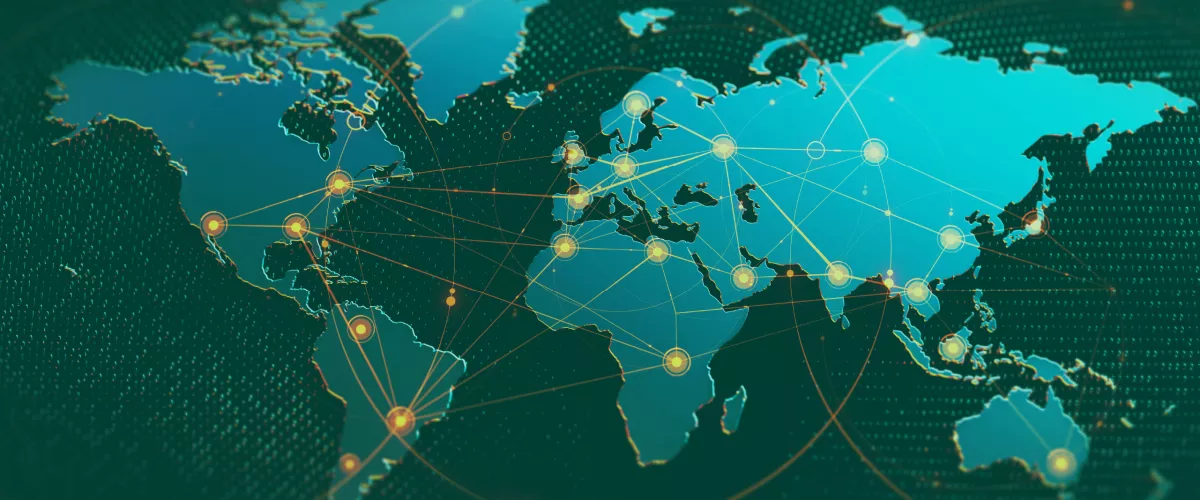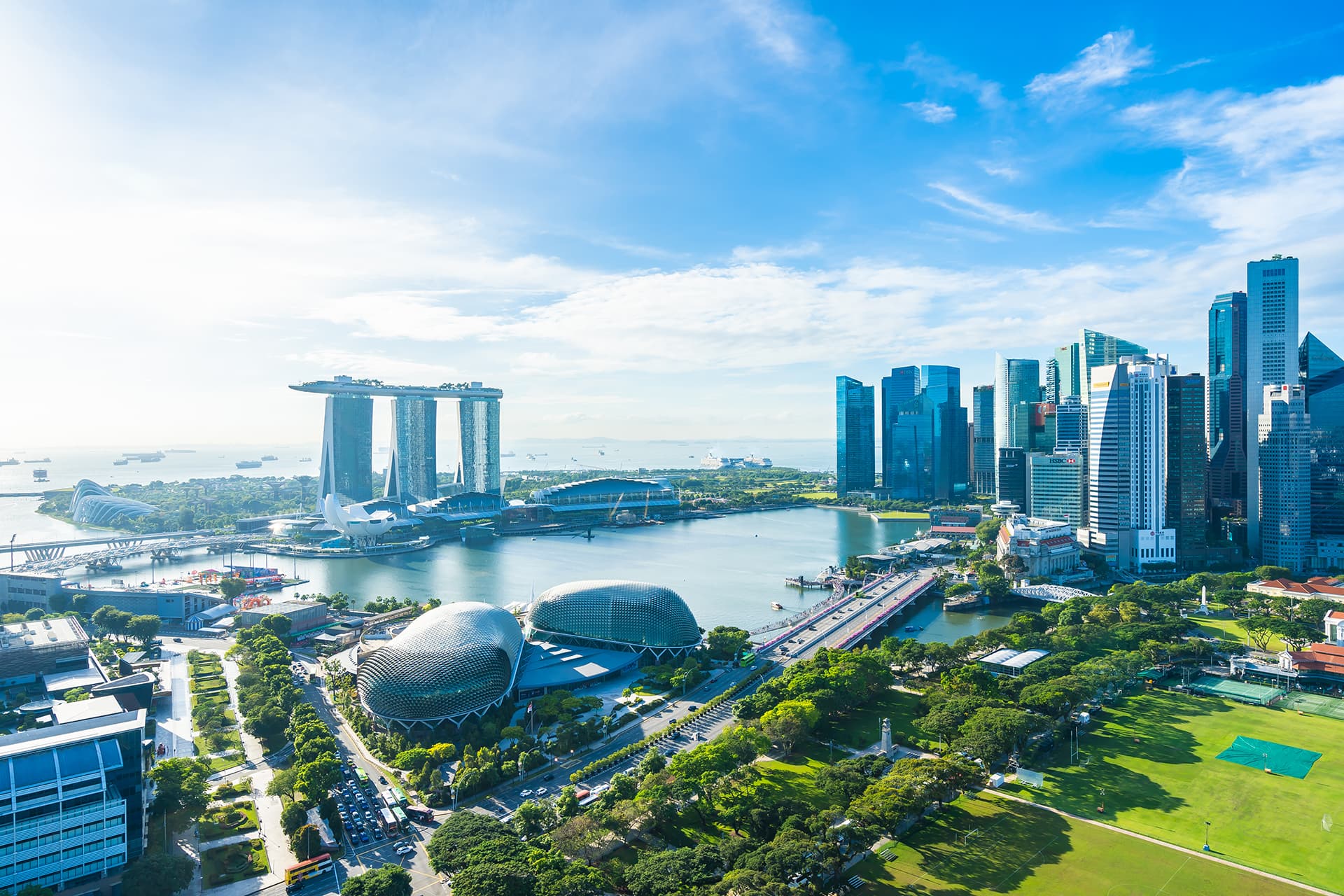
January 2024
Toll’s leaders make it their business to prepare for what’s ahead in global supply chains. Here, five of our global experts share the top nine supply chain trends you need to watch in 2024.
Pricing and schedules will continue to be unpredictable
Toll Managing Director Alan Beacham says ocean carriers are under enormous pressure and are facing a difficult model of revenue and capacity, which will bring unpredictable schedules, reliability and pricing in 2024.
Alan says that major trade routes are being disrupted in the Red Sea right now, and there are union negotiations on the east coast of the United States scheduled for later this year, which could lead to industrial disruption. This is alongside four months of industrial issues on the waterfront in Australia, with the cumulative impact creating some short-term pandemic-like trading conditions.
“This has brought delays and congestion leading to supply-demand imbalances and spiralling ocean freight rates. This puts pressure on pricing and schedules, though we expect they’ll be resolved in the medium term as underlying demand is soft,” Alan says.
“The other issue is that carriers will want to bring rates back to sustainable levels. One way is to cut capacity. However, they’ve committed to new ship orders, so capacity will keep coming for at least the next two years. To bring prices to a sustainable yield, carriers will attempt to keep cutting capacity impacting schedule reliability.”
Toll’s President of Global Forwarding, Matthew Warrington, recommends that customers consider different transport modes.
"We’re working with customers to offer different routes and transport modes. At Toll we’re seeing a huge uptake in our sea-air freight solutions. We also remind customers to communicate volumes and timeline requirements to improve planning,” Matthew says.
The impact of a price on carbon
As of 1 January 2024, the European Emissions Trading Scheme put a price on emissions for vessels over 5,000 gross tonnages that travel by ocean to, from and between EU ports, and further carbon charges are being considered later this year.
While shipping lines are charging different fee levels to recover this new cost, Toll has averaged the fees to simplify the fee structure for customers. We also support customers who need to track their emissions with carbon reports.
“Many countries, including China and Singapore, are implementing similar systems. It’s a lower cost per tonne than in the EU, but clearly this will have a direct impact if the logistics industry is not prepared,“ Matthew says.
The immediate effect will be a demand for reporting and transparency along the supply chain and a focus on reducing costs by finding the most efficient way to move products.
“This is a big conversation we are having with customers, looking at their emissions levels and finding ways to reduce this and accurately report back so they can include that in their annual report,” Matthew says.
“Carbon footprint will be significant for the logistics industry, not only as a big trend in 2024 but for the next 20 to 30 years.”
Push for sustainability driving new technologies
It is not just the cost of carbon driving investment in more sustainable technologies but also global consumer sentiment. Another driver is that annual reports for publicly listed companies require more sustainability insights.
“Sustainable and ethical sourcing will continue to be a massive trend. We are doing much more than we did a year ago,” Matthew says.
To decarbonise its fleet, Toll is investing around A$300 million in new fleet over the next two years, with at least 10 per cent or A$25 million to be invested in sustainable technology. This will include battery electric and hydrogen vehicles and other emerging technologies such as biofuels to help decarbonise large hard-to-abate road transport.
“Electric vehicles are pretty much the new norm now – every transport company in the world is beginning to buy electric vehicles,” Matthew says.
In July 2023, Toll introduced its first hydrogen-powered long-haul truck in China, with plans to build a fleet of hydrogen trucks there. This follows an investment in two hydrogen-powered electric prime movers in Australia.
Toll’s Head of Strategy and Business Development for Asia Logistics, Damon Gu says: “We are working in close collaboration with local service providers and government to put infrastructure in place. We also help our customers calculate the carbon footprint impact and cost of running this new technology.”
“Typically, when introducing EVs or hydrogen trucks, the costs are higher at the outset. The good news is we are seeing more customers make this investment in the future - setting specific budgets to reduce carbon emissions, leading global initiatives, and asking Toll to work with them to achieve global targets,” Damon says.
This is a space to watch. “We are working with many global partners on sustainable initiatives, with more starting in the coming months.”
Supply chain resilience – shortening and diversifying supply chains
Alan Beacham says supply chains will get shorter.
“We expect to see an overall macro trend of supply chains repositioning themselves to be more resilient to geopolitical shocks, to supply disruptions, and to have low carbon outcomes by being positioned closer to the market they serve.”
Alan expects Mexico will be a big winner with a shift to manufacturing there to supply the US market. India will also see a boost with its central location alongside other South East Asian countries.
Southeast Asian economies will also benefit from the move to de-risk and diversify manufacturing.
Toll Executive Vice President Energy, Marine and Renewables Asia Pacific, Rajeev Sood says: “When China shut down for COVID, we all realised we can’t be relying so heavily on China for manufacturing. But we also can’t just let go of China because they still have the might and skill to produce goods faster than anywhere else in the world. The conversation now is about diversifying sourcing across Asia.”
“We are seeing more consumer goods produced in Thailand, India, Indonesia and Vietnam. It’s India for industrial goods, Thailand for automotive semiconductors, and Vietnam for solar panels.”
President of Asia Logistics, Jonathon Kottegoda-Breden, says Toll is investing in warehouses across Asia with multiple projects rolling ahead.
“While the pandemic is behind us, the trend continues to diversify manufacturing to other countries, which is why Toll is investing A$650 million over the next four years in new warehouses in India, Thailand and China, complementing the 160 existing facilities across 13 Asian markets that we offer today,” Jonathon says.
Reshoring
Another variation of shortening supply chains is the trend of reshoring, which boosts local economies, and is expected to gather momentum in 2024.
“Businesses and governments are looking at ways to bring manufacturing back into their own country,” Rajeev says.
“For example, the US is bringing the production of semiconductor chips back to the US, to remove its dependency on China and Korea. India has started giving grants to businesses to produce in-house and boost domestic production. Indonesia used to send raw materials to other countries for refining, and now they’re doing that onshore,” says Rajeev.
“This is a trend we expect will continue, and it’s changing the flow of the goods that used to occur from one region to another.”
Rajeev says this approach is not without challenges. “Often the most complex supply chain challenges are posed within a country’s borders, particularly when dealing with new markets – and this is where a trusted supply chain partner is critical,” Rajeev says.
“Take Indonesia, for example, where its geography of thousands of islands poses unique challenges in moving consignments along the supply chain. Our SPIL-Toll joint venture team in Indonesia never ceases to amaze with its responses to complex land-sea challenges across this vast country.
“Over more conventional terrain, such as within India, complex state borders and differing legal systems can challenge even the most experienced supply chain managers. It is important to leverage deep market knowledge and strong in-country networks to ensure resilient and efficient reshoring or nearshoring strategies,” Rajeev says.
Labour shortages will accelerate investment in automation
Rajeev says: “Since COVID, there has been an acute labour shortage across Asia. Many people aren’t returning to work at manufacturing sites.”
More customers are looking at ways to automate repetitive processes to fill these gaps, Rajeev says. “A technology that’s becoming critical in the office environment is RPA. (robotic process automation) and this will extend into AI driven processes. It is already happening in certain areas, and we will see this more and more in the next five to 10 years. This will not only overcome labour shortages, but also cut costs and improve productivity.”
“Within the warehouse environment we are seeing more flexible and adaptable forms of automation that enable lower cost startups and the ability to deliver elements of automation within existing environments,” Rajeev says.
Damon adds that there is also a bigger picture to consider with the younger generation’s career aspirations. “Fewer young people are willing to be forklift drivers or operators in a warehouse’s pick and pack manual process. They are more interested in a digital-related career path, or in having control of their own time as an independent driver,” he says.
“The question for 2024 is: ‘How do you provide a better work environment for existing staff and also prepare for more automation?”
AI and digitisation
Jonathon says: “AI is the buzzword that’s being mentioned all over the world with a variety of applications. For our customers, AI is helping with things like sales and operations planning for custom products. Traditionally people would analyse spreadsheets and data to predict inventory levels and sales. This year we’ll see more AI forecasting.”
AI is also being used in Toll’s warehousing. “We now use AI in forecast planning to see our customer trends and the impacts of weather and other disruptions. AI will improve the accuracy of forecasting,” Jonathon says.
Win-win-win with vendor-managed inventory
Damon says another trend that involves AI this year will be pushing inventory closer to consumers to speed up the response to market.
“We’ll see changes to the inventory holding model with vendors. Retailers don’t want to hold one million white t-shirts if they don’t need to. They will use AI to predict consumer insights and proactively manage inventory,” Damon says.
“Toll is supporting customers by facilitating the business relationship between the retailers and the original equipment manufacturers and vendors and creating solutions to place inventory closer to consumers. We have the underlying digital capability to connect the retail customer, the vendors and potentially the consumers.”
“We can facilitate this whole movement: improve customer management, help retail companies reduce inventory levels, and help manufacturers get closer to the market,” Damon says.
Ecommerce – the new normal
Alan says eCommerce is here to stay with people who are now well-conditioned to its processes and benefits and genuinely enjoying the online shopping experience. While the growth in eCommerce won’t be as rapid as through COVID, a steady rise is expected this year.
“This will also drive demand for information visibility provenance, with our customers and end consumers increasing their thirst for information – both in terms of sustainability and confidence in schedule reliability,” Alan says.
“We will also see the innovation trend around eCommerce delivery models continue. Retailers and manufacturers who don’t want to be beholden to big platforms will innovate to find other ways to get products to market,” he says.
“Toll is also working with customers to find new ways for shoppers to interact between the physical and digital worlds. This might mean we’ll see more innovative outcomes in how we ship this year.”
Toll’s Future Logistics Hub
Filled with news, insights and interviews - your look into the world of logistics
Access industry insights
Stay up to date with our supply chain experts








